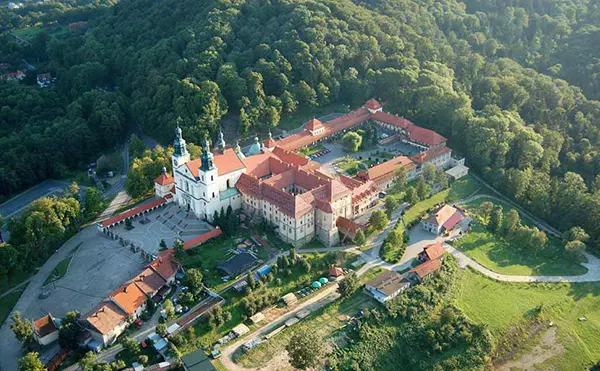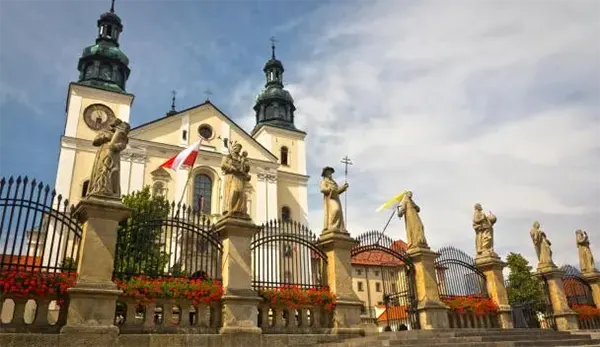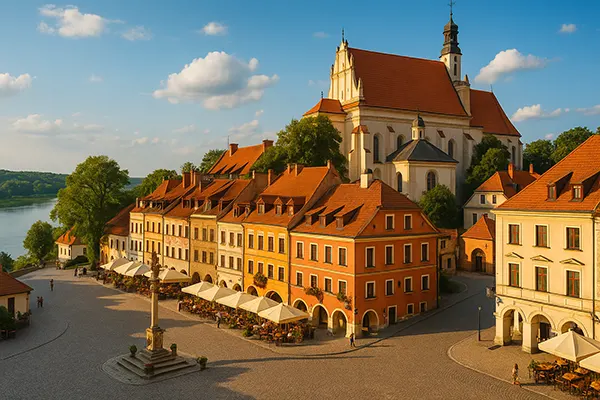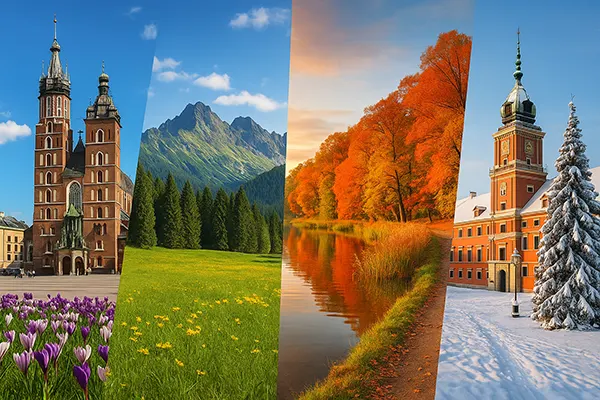
Kalwaria Zebrzydowska: Architecture, Sacredness and Art in a Landscape Park
Kalwaria Zebrzydowska, located near Kraków in southern Poland, is a unique pilgrimage site combining sacred architecture, baroque artistry and natural landscapes. Since 1999 it has been part of the UNESCO World Heritage List, recognised for its religious, historical and cultural value. The sanctuary attracts not only pilgrims but also travellers interested in history, architecture and European heritage.
The Origins and Historical Background
The sanctuary was founded in the early 17th century by Mikołaj Zebrzydowski, a Polish nobleman inspired by the topography of Jerusalem. His vision was to recreate the Passion of Christ in a natural setting, building chapels that represented key stations of the Via Dolorosa. This idea reflected the baroque tradition of blending faith with monumental architecture.
The Bernardine monks, invited to the site, became guardians of the sanctuary and shaped its spiritual life. They developed not only the liturgical practices but also influenced the architectural expansion, ensuring that each chapel and route served a symbolic purpose. The work was supported by artists and craftsmen of the period, creating a harmony of architecture and landscape.
Over time, Kalwaria Zebrzydowska grew into a major religious centre, visited by pilgrims from across Poland and Europe. Its significance increased during the Counter-Reformation, when the Catholic Church promoted strong expressions of faith through art and sacred landscapes.
Symbolism and Chapel Routes
The sanctuary includes more than 40 chapels and churches spread across a picturesque landscape. Each building represents a biblical scene, allowing pilgrims to reflect on the Passion of Christ. The routes are not random: they follow the natural terrain, symbolising the spiritual journey of believers.
The most important paths are the so-called “via Crucis” (Way of the Cross) and the Marian routes. These trails allow pilgrims to immerse themselves in meditation while walking through forests and hills, linking physical movement with prayer. The symbolism is designed to make the experience tangible and profound.
The chapels themselves are masterpieces of baroque art, featuring detailed sculptures, frescoes and architectural forms that represent biblical symbolism. They were built with great attention to detail, combining spiritual meaning with artistic excellence.
The Cultural and Artistic Dimension
Kalwaria Zebrzydowska is not only a religious site but also an outstanding example of European baroque culture. The basilica, dedicated to Our Lady of the Angels, stands as the central point, with its richly decorated altars, paintings and sculptures. Artists from Italy and Poland contributed to its interior, making it a showcase of baroque craftsmanship.
The sanctuary is also known for its annual Passion Play, performed during Holy Week. This tradition, dating back centuries, involves local communities and attracts thousands of visitors. The combination of theatrical performance, religious devotion and landscape architecture makes it a unique cultural phenomenon.
Art historians emphasise the exceptional integration of architecture with natural surroundings. The park was designed to guide not only religious reflection but also artistic appreciation, demonstrating how art can shape spiritual experiences.
Events and Pilgrimage Life
Throughout the year, Kalwaria Zebrzydowska hosts numerous religious events, including Marian feasts, retreats and pilgrimages. The sanctuary is particularly crowded in August, during the Assumption of Mary celebrations, which attract thousands of faithful from Poland and abroad.
Pilgrimage life here is strongly connected with community traditions. Families and parish groups travel together, creating a shared religious and cultural experience. The sanctuary thus plays a role not only in personal spirituality but also in reinforcing social bonds.
For art and culture enthusiasts, these events provide a chance to observe centuries-old rituals combined with living traditions. The performances, prayers and processions are integral to the identity of the sanctuary and demonstrate how sacred heritage remains alive in contemporary Poland.

Practical Information for Visitors
Kalwaria Zebrzydowska is located about 40 kilometres southwest of Kraków, making it easy to combine with a city visit. The sanctuary is accessible by train, bus or car, and many tourists plan day trips including both Kraków and Kalwaria. Another popular combination is with Częstochowa, home to the famous Black Madonna icon.
The best time to visit is spring and summer, when the landscape is at its most beautiful and cultural events take place. However, those seeking a quieter experience may prefer autumn, when the park is less crowded but equally atmospheric. Religious celebrations during Holy Week are especially intense but also very busy.
Key points not to miss include the Basilica of Our Lady, the Chapel of the Tomb of Christ, and the Marian chapels scattered across the hills. Walking the pilgrimage routes is highly recommended, even for non-religious visitors, as it offers a chance to appreciate both the spiritual symbolism and the scenic beauty of the park.
Visitor Recommendations
Comfortable shoes are essential, as the routes involve walking on uneven terrain. Visitors should plan several hours to explore the sanctuary fully, particularly if they want to walk both the Passion and Marian routes. Guided tours are available and provide valuable historical and cultural context.
Photography is allowed in most areas, but visitors are asked to respect the sacred character of the site, especially during services. Many chapels are still used for liturgical purposes, and silence is encouraged. Donations are welcome and help in preserving the sanctuary’s cultural heritage.
For those interested in broader travel, Kalwaria Zebrzydowska can be a stop on a larger itinerary exploring southern Poland, which includes sites such as Wadowice, the birthplace of Pope John Paul II, and the cultural richness of Kraków. This makes the sanctuary both a religious destination and a valuable cultural landmark.




